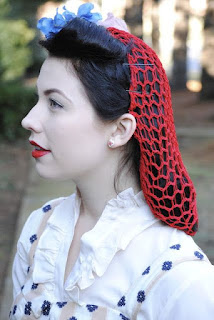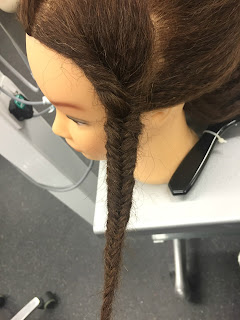‘Although the reign of
Elizabeth I of England lasted from 17th November 1558 to 24th
March 1603, most modern historians view the Elizabethan era more broadly. Many
of the defining characteristics of the era were products of events in earlier
periods, particularly the reign of Elizabeth’s father, Henry VIII.’
Historians often describe this era as the ‘golden age’ in English history. ‘Life in
the Elizabethan era varied according to status and location. It was the time of
renaissance. During this era, wealthy women were very subservient to men. They
were dependent on their male relatives to support them whereas the poor
including both men and women lived/worked in close family units and trades in
villages.’
Hairstyling:
‘During the Elizabethan era, men wore their hair short,
while women combed their long hair upwards where it was fixed with a wire frame
that formed a heart shape. By the 16th century Queen Elizabeth became the main
female icon and set the trends for the era. Her lily-white complexion and red
tresses set women everywhere rushing for copious amounts of white face powder
and red wigs.
Women strove to imitate her curly red hair, using different
recipes for bleaching their hair. Some of these recipes used strange elements,
including urine. False hair and wigs were commonly used during this era, as
they were easier to manage. Red wigs were especially popular during this era.
Finally, elaborate headdresses entered the fashion scene during the Elizabethan
period. A headdress known as a snood was
a type of hairnet that became highly popular. Similar headdresses appeared,
such as a bag-coif which featured a gathered bag at the back covering the
wearer's head. The fabric of the bag could match the dress, or could be made of
a plain black silk, covered with gold netting. In period portraits, cauls were
made of fabric, or fabric covered by netted cord. Cauls were also frequently
decorated with applied cord, couched or embroidered on, as well as pearls,
gems, and other expensive decoration for the nobility.’
Social
structure – Elizabethan England had four main classes:
- ‘The
Nobility – a person’s class determined how they could dress, where they
could live, and the kinds of jobs people and their children could get. A
nobleman was rich and powerful and therefore during the reign of Elizabeth as
well as the reigns of her father and grandfather, Henry VIII and Henry VII, all
rarely appointed new nobles. They viewed the noble class as a threat to their
power and liked to keep their numbers small. A person could become a noble
either by birth or by grant from the king or queen. Nobility could lose their
fortune, but it took a high crime like treason to lose their title.
- The
Gentry – these were knights,
squires, gentlemen and gentlewoman whose fortunes were great that they did not
have to work with their hands for a living. Their numbers grew rapidly, and
became the most important class during Elizabethan time. They could start as a
knight and through generations and marriages they could gradually build a
wealth and title. Most of the important people of this time came from this
class.
- The
Yeomanry – this was also known as the ‘middle class’ people. . They could live comfortably with the little savings they
built up, but at any moment, be it illness or famine, lose everything. While
the gentry spent their wealth building large homes, the yeomen used their
wealth more simply and instead worked to expand their land and improve it.
- The Poor
– At the bottom were the Poor who for some reason or
another found themselves without money, food, or shelter. Because their numbers
were increasing, the Poor Laws were passed to assist them. Any Poor person
found guilty of being able to do an honest day's work but who chose not to,
could be sentenced to death.’
‘Both men and women of the upper class took pride in their
hair. In fact, the wealthy would spend long hours in a barbershop getting their
hair done in fantastic styles. When upper class men went bald, they depended on
wigs to help them to keep up with the latest hair trends. Fashionable wigs for
men were either white or yellow. Men also cared a great deal about their facial
hair. Many upper class men spent a lot of money keeping their beards groomed
and fashionable.
For women, the most fashionable hair colours were blonde and
red. In addition, it was considered fashionable for women to have high
foreheads; so many women plucked their hairlines until the desired height was
achieved. Some of the wealthy upper class women enjoyed wearing their hair in a
small beehive on top of their heads. Women occasionally used hair accessories
and hats, and many women liked to wear elaborate silk hairnets that were
decorated with jewels and gold trimmings. Men enjoyed wearing fashionable hats
as well, and it was common for a man of the upper class to wear a fine silk hat
with a feather inside.
For their hair styles, both women and men of the lower class
had a common style. They could have longer hair than before the Elizabethan
time because the Queen allowed them to grow their hair longer. Women almost
always braided their hair into one braid so that it was more comfortable when
they were working.’
Clothing
– ‘Elizabethan clothes provided
information about the social status of the person wearing them. Only royalty
were permitted to wear clothes trimmed with ermine. Lesser nobles were allowed
to wear clothing trimmed with fox and otter. Elizabethan laws dictated what
colours and type of clothing individuals were allowed to own and wear, an
immediate way to identify rank.’
Music
– ‘this was an important form of entertainment and had developed into
sophisticated and varied forms. The introduction of the theatre during the
Elizabethan era was enhanced as the plays were accompanied by music. The
different types of Elizabethan music were church music, court music, street
music, theatre music and town music. All Elizabethans attended church on a
Sunday which led to the popularity of hymns and secular songs. Instruments
could be performed by Elizabethan musicians or simple songs and ballads could
be sung in the villages/fields.’
Theatre
– ‘the Elizabethan Era is
perhaps most famous for its theatre and the works of William
Shakespeare. English Renaissance theatre began with the opening of
"The Red Lion" theatre in 1567. Many more theatres opened in London
over the next several years including the ‘Curtain Theatre’ in 1577 and the
famous ‘Globe Theatre’ in 1599. The period
produced some of the world's great playwrights including Christopher Marlowe
and William Shakespeare. Today Shakespeare is considered the greatest writer of
the English language. Popular genres of theatre included the history play, the
tragedy, and the comedy.’
Food – ‘food
and drink varied according to status and wealth. During the Elizabethan era
meat was often a sign of wealth however as the population rose this was
supported by improving agricultural techniques and inventions. The Elizabethan
era also saw the introductions of different foods from other parts of the
world. Food was purchased from markets and fairs. In larger cities like London
there were specific markets which sold fish, dairy products or
fruit/vegetables. Meat was sold at large livestock markets.’
Sports – ‘various
sports were played and watched and formed much of Elizabethan entertainment,
especially for the nobility. Elizabethan games and sports included archery,
bowling, wrestling, hunting, hawking etc. The Elizabethan era was dangerous and
violent. Blood sports were enjoyed involving bears, bulls, cocks and dogs.’



































